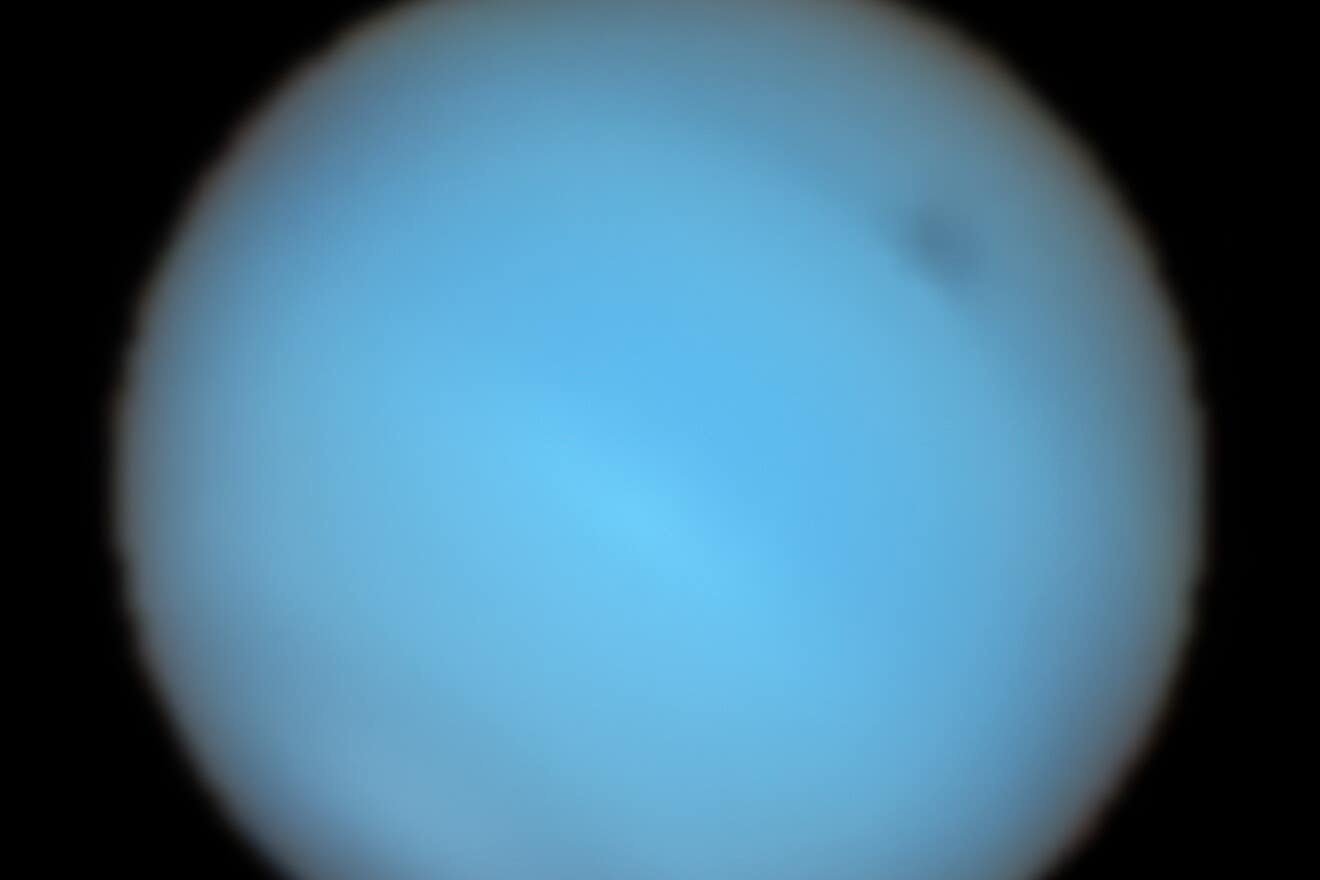Mysterious dark spot on Neptune detected from Earth for the first time
A dark spot was first discovered on Neptune by Nasa’s Voyager 2 in 1989.

Your support helps us to tell the story
From reproductive rights to climate change to Big Tech, The Independent is on the ground when the story is developing. Whether it's investigating the financials of Elon Musk's pro-Trump PAC or producing our latest documentary, 'The A Word', which shines a light on the American women fighting for reproductive rights, we know how important it is to parse out the facts from the messaging.
At such a critical moment in US history, we need reporters on the ground. Your donation allows us to keep sending journalists to speak to both sides of the story.
The Independent is trusted by Americans across the entire political spectrum. And unlike many other quality news outlets, we choose not to lock Americans out of our reporting and analysis with paywalls. We believe quality journalism should be available to everyone, paid for by those who can afford it.
Your support makes all the difference.A mysterious dark spot on Neptune has been detected from Earth for the first time.
Using the European Southern Observatory’s (ESO) Very Large Telescope (VLT), astronomers have seen a large dark spot in Neptune’s atmosphere, with an unexpected smaller bright spot next to it.
Experts say this is the first time a dark spot on the planet has been observed with a telescope on Earth.
This is an astounding increase in humanity’s ability to observe the cosmos
These occasional features in the blue background of the planet’s atmosphere are a mystery to astronomers, and the new results provide further clues about their origin.
Co-author Michael Wong, a researcher at the University of California, Berkeley, in the US, said: “This is an astounding increase in humanity’s ability to observe the cosmos.
“At first, we could only detect these spots by sending a spacecraft there, like Voyager.
“Then we gained the ability to make them out remotely with Hubble. Finally, technology has advanced to enable this from the ground.”
Large spots are common features in the atmospheres of giant planets, the most famous being Jupiter’s Great Red Spot.
A dark spot was first discovered on Neptune by Nasa’s Voyager 2 in 1989, before disappearing a few years later.
Patrick Irwin, professor at the University of Oxford and lead investigator of the study, said: “Since the first discovery of a dark spot, I’ve always wondered what these short-lived and elusive dark features are.”
The researchers used data from the VLT to rule out the possibility that dark spots are caused by a clearing in the clouds.
But instead the observations indicate that dark spots are likely the result of air particles darkening in a layer below the main visible haze layer, as ice and hazes mix in Neptune’s atmosphere.
Because dark spots are not permanent features of Neptune’s atmosphere and astronomers had never before been able to study them in sufficient detail, it was not easy for them to come to this conclusion.
I’m absolutely thrilled to have been able to not only make the first detection of a dark spot from the ground, but also record for the very first time a reflection spectrum of such a feature
But they were able to do so after Nasa and the European Space Agency’s Hubble Space Telescope discovered several dark spots in the planet’s atmosphere, including one in the planet’s northern hemisphere first noticed in 2018.
Using the VLT’s Multi Unit Spectroscopic Explorer (Muse) instrument, the researchers were able to split reflected sunlight from Neptune and its spot into its component colours, or wavelengths.
This allowed them to study the spot in more detail than was possible before.
Prof Irwin said: “I’m absolutely thrilled to have been able to not only make the first detection of a dark spot from the ground, but also record for the very first time a reflection spectrum of such a feature.”
Having a spectrum enabled astronomers to better determine the height at which the dark spot sits in the planet’s atmosphere, and it also provided information on the chemical composition of the different layers of the atmosphere, which gave the team clues as to why the spot appeared dark.
The observations also offered up a surprise result – a rare deep bright cloud type that had never been identified before, even from space.
This rare cloud type appeared as a bright spot right beside the larger main dark spot, according to the observations published in Nature Astronomy.
The data showed that the new deep bright cloud was at the same level in the atmosphere as the main dark spot.
This means it is a completely new type of feature compared with the small companion clouds of high-altitude methane ice that have been previously observed.